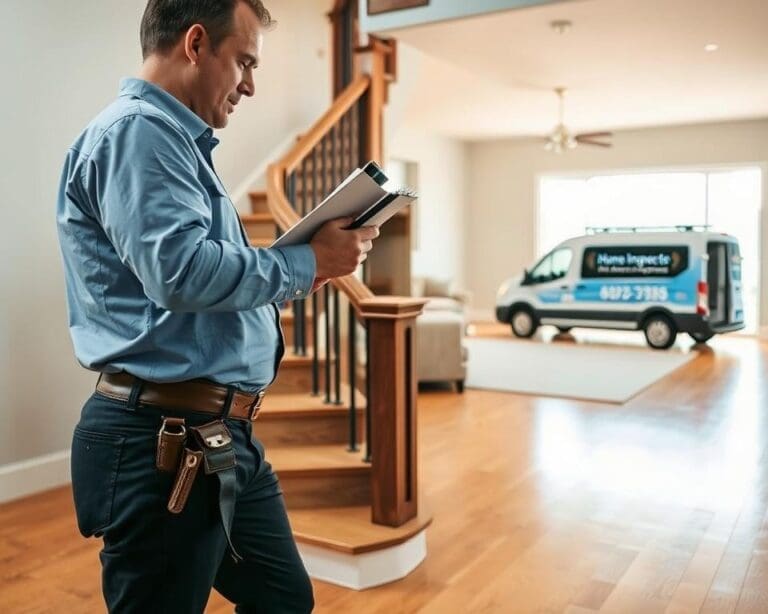In recent years, robot mowers have surged in popularity among gardening enthusiasts seeking a more efficient and convenient way to maintain their lawns. Particularly appealing is the question of whether these innovative machines can tackle steep garden slopes. Designed with advanced technology to optimise performance across varying terrains, robot mowers for slopes are becoming a vital tool for gardeners facing challenges associated with gradients. However, concerns regarding their performance and safety on inclines persist. Is a steep slope robot mower the right choice for your garden needs? Let’s explore this intriguing subject further.
Understanding the Mechanics of Robot Mowers
Robot mowers have revolutionised garden maintenance, especially in challenging terrains. A significant aspect of their functionality lies in their ability to traverse steep slopes, thanks to advanced technology designed specifically for this purpose. With an increasing focus on creating landscaped gardens with gradients, the demand for innovative, slope-adaptive robotic lawnmowers has surged.

How robot mowers navigate challenging terrain
Equipped with sophisticated sensors, a slope-adaptive robotic lawnmower can accurately assess its environment. These sensors detect variations in elevation and adjust the mower’s speed and cutting power accordingly. Many models utilise laser-guided navigation systems that provide exceptional precision, avoiding obstacles and ensuring consistent cutting quality. Thanks to these advancements, the automated mower for steep gradients can operate efficiently, maintaining verdant lawns without risking damage in difficult areas.
The technology behind slope-adaptive capabilities
The underlying technology of slope-adaptive robotic lawnmowers includes components such as gyroscopes and accelerometers. These tools allow the mower to better understand its position and orientation when tackling steep inclines. This capacity for real-time adjustments enhances overall performance, enabling seamless operation even on aggressive slopes. With a reliable automated mower for steep gradients, maintaining a well-kept garden has never been more accessible or efficient.
Can a robot mower handle steep garden slopes?
Assessing the performance of a robot mower for slopes involves rigorous testing to ensure that these machines can navigate the challenges presented by steep gradients. Testing is crucial as it reveals the mower’s ability to maintain consistent performance across various slope percentages. Users often report their experiences, providing invaluable insights into the adaptability of different models while tending to intricate terrains.
Importance of slope testing in robot mowers
Slope testing helps identify which models qualify as the best robot mower for hilly terrain. By measuring how well a mower operates on inclines, manufacturers can refine their designs, improve the technology, and ultimately provide users with reliable solutions. This assessment aids potential buyers in selecting the most suitable robot mower for their specific yard conditions.
Real-life examples of robot mowers on steep gardens
Numerous homeowners have successfully integrated robot mowers into their steep gardens, showcasing the practical effectiveness of these machines. For instance, users have reported that models like the Husqvarna Automower and the Robomow handle steep inclines with ease, yielding well-manicured lawns. These real-life testimonials reflect the potential of robot mowers to thrive in challenging environments.
Best Robot Mowers for Hilly Terrain
For those with gardens that feature challenging slopes, selecting the right robot mower becomes essential. The best robot mower for hilly terrain needs to combine advanced technology with robust design to ensure that it can effectively manage steep inclines with ease. Below are some top-rated models well-suited for tackling such challenges.
Top-rated models for steep inclines
- Husqvarna Automower 450X: Renowned for its powerful motor and ability to handle slopes up to 45%, this model excels in navigating complex garden layouts while providing a clean cut.
- Gardena Sileno City: With a slope capacity of 35%, this compact option is perfect for smaller gardens with steep gradients, delivering impressive mowing performance.
- Robomow RS630: This robust machine caters to steep incline challenges with a cutting range of 22-60mm, ensuring your lawn stays immaculate even on the toughest landscapes.
Features to look for in a hilly garden robot mower
When seeking a steep slope robot mower, consider these crucial features:
- Powerful battery life that offers extended operation cycles on steep terrain.
- Excellent traction control, allowing the mower to grip well and operate safely on inclines.
- Customisable cutting heights to manage various grass lengths effectively.
- Advanced navigation technology enabling smooth manoeuvring around garden obstacles.
Robotic Lawn Mower Slope Capacity Explained
The effectiveness of robotic lawn mowers on uneven terrain largely depends on their slope capacity. Many homeowners with hilly gardens find it essential to choose a mower that can handle specific incline percentages gracefully. Understanding which models excel at this task not only helps in keeping lawns looking pristine but also ensures the longevity of the autonomous mower for inclines in challenging conditions.
What slope percentages are manageable
Most robotic lawn mowers are designed to tackle slopes of up to 25%, making them ideal for the average garden situated on an incline. This percentage indicates a clear parameter for homeowners. Some advanced models may even manage slopes exceeding this range, typically catering to enthusiasts with more intricate landscaping requirements. When evaluating a mower, always check its designated slope capacity, as each model varies significantly.
Comparing slope capacities across leading brands
Different brands showcase varied robotic lawn mower slope capacity, which can influence purchasing decisions. Notable names like Bosch, Honda, and Worx present models equipped to handle steep inclines effectively. For instance:
- Bosch mowers often offer excellent slope handling, with select models managing angles up to 30%.
- Honda’s robotic offerings are built for sustained performance on inclines, typically featuring robust designs and impressive power.
- Worx mowers balance power and intelligence, ensuring reliable operation on slopes of up to 20%.
Homeowners can alleviate worries regarding lawn care by selecting the right model based on reliable reviews and performance metrics associated with robotic lawn mower slope capacity.
Benefits of Using an Autonomous Mower for Inclines
Utilising an autonomous mower for steep garden slopes brings a host of advantages, significantly enhancing the maintenance experience. Homeowners can relish in the remarkable time-saving advantages of robotic mowing. Not only do these mowers operate efficiently while navigating challenging terrains, they also complete the task of mowing quickly, gifting users with extra hours to enjoy leisure activities or other garden maintenance tasks.
Time-saving advantages of robotic mowing
One of the most compelling reasons to embrace robotic mowers is their ability to efficiently handle mowing schedules. The autonomous functionality of these machines allows for regular lawn upkeep without constant supervision. This not only alleviates the burden of manual mowing but also enables homeowners to focus on other vital gardening projects or even relax and enjoy their outdoor space.
Environmental benefits of automated lawn care
Automated lawn care offers significant environmental benefits, particularly the reduction of harmful emissions. Many robotic mowers operate on electric power, eliminating the need for fossil fuels typically associated with traditional lawn equipment. This shift leads to cleaner air and less pollution, fostering a healthier living environment. Furthermore, these mowers can enhance lawn health by ensuring more consistent mowing patterns, potentially reducing water usage, which is increasingly important in maintaining ecological balance.
Challenges Faced by Steep Slope Robot Mowers
Operating a steep slope robot mower presents unique challenges that can affect its performance. Uneven terrain may lead to inconsistent mowing patterns, resulting in patches of unmown grass. Furthermore, robots may struggle with traction on steep inclines, impacting their ability to navigate effectively. Battery life can also be a significant factor during steep climbs, as demanding terrain often calls for more energy consumption.
Potential issues with performance on uneven ground
Maintaining efficiency during operation on sloped areas poses several issues. Traction loss becomes a common problem, particularly when wet conditions prevail. The uneven ground can cause the mower to slip or even stall. These performance limitations may lead to inadequate coverage, and the need for manual touch-ups could arise. Addressing these challenges is crucial for ensuring the optimal functioning of a steep slope robot mower.
Maintenance considerations for robot mowers tackling slopes
Regular upkeep is vital for robot mowers operating on inclines. It is essential to clean the undercarriage frequently to prevent debris buildup, which can affect performance. Additionally, monitoring the blades for signs of wear and tear becomes even more critical when tackling steep terrain. Here are some key maintenance considerations for robot mowers:
- Inspect and clean the mower’s sensors to ensure accurate navigation.
- Sharpen or replace blades as needed to maintain cutting efficiency.
- Examine tires for wear to ensure optimal traction.
- Check the battery regularly to guarantee it holds a charge for extended periods.
Choosing the Right Robotic Lawn Mower for Your Garden
Selecting the ideal robotic lawn mower requires careful consideration of various factors, particularly when it comes to evaluating garden size and slope steepness. Understanding these elements can significantly influence the performance and efficiency of the mower in your specific outdoor environment.
Evaluating garden size and slope steepness
When assessing your garden, take into account its dimensions and the degree of any slopes present. Larger gardens may necessitate more advanced models that are capable of navigating extensive areas without frequent charging. Integrating features that optimise mowing time and coverage is essential for achieving a pristine lawn.
Slope steepness is equally important. Robot mowers vary in their ability to handle gradients, so determining the steepness of your garden’s slopes will help narrow down your options. Brands often provide detailed specifications regarding their mowers’ slope capabilities, giving you an informed starting point.
Customer reviews and experiences on mowing steep gardens
Customer reviews on steep gardens offer a treasure trove of insights regarding real-world performance and satisfaction. Many users share their stories about the challenges and triumphs encountered while employing robotic mowers on inclines.
- “I was amazed by how well my mower handled the steep parts of my garden. It saved me hours of manual mowing.”
- “Initially, I was sceptical about its slope capacity, but it exceeded all my expectations.”
- “The customer service team helped me choose the right model for my garden’s steep areas, and I couldn’t be happier.”
By tapping into this community feedback, potential buyers can gain a clearer picture of what to expect and make more informed decisions tailored to their unique garden conditions.
Future of Robotic Lawn Mowers in Landscaping
The future of robotic lawn mowers is an exciting prospect for the landscaping industry, offering numerous advancements in robotic lawn care technology that promise to revolutionise gardening. As manufacturers refine their designs, we can expect significant improvements in AI-driven navigation systems, enabling these machines to tackle steep terrains with remarkable agility and precision. The integration of machine learning features will not only enhance performance on challenging slopes but also allow for continuous adaptation to changing garden layouts and conditions.
Another transformative aspect lies in the increasing connectivity of robotic mowers. The advent of smart home technology is paving the way for seamless remote control capabilities and enhanced interaction with household systems. This connectivity will empower gardeners to monitor and adjust mowing schedules with ease, ensuring that maintenance can be both efficient and convenient. Imagine receiving an alert on your smartphone, enabling you to supervise your garden’s upkeep from anywhere in the world.
As we look ahead, the potential for robotic lawn mowers extends beyond mere automation. These advancements not only promise to save time and labour but also depict an inspiring vision of the future where gardening becomes increasingly autonomous and accessible. With each new innovation, the dream of effortless landscaping inches closer to reality, fostering a deeper connection between technology and nature.









